While this gigantic country (it’s larger than the continental US!) came with many challenges (see below), one thing that did not end up being an issue for me at all was safety. From what I’d read and heard, Brazilian cities (especially Rio and Sao Paulo) are extremely dangerous and tourists are at high risk of being pickpocketed, robbed, or worse. After spending 2 months in the extremely safe land of New Zealand, I expected to be on edge my entire time in Brazil, never being able to fully relax in public.
Suffice it to say this was not the case at all! While crime is indeed an issue here and it’s important to not leave your wallet in your pocket, have your phone out in crowded places, or walk in quiet urban areas at night, if you take those basic precautions and don’t randomly wander into dangerous neighborhoods, it seems to me that it’s quite unlikely that anything will happen to you*. I had no problems and I felt very comfortable walking around Rio and Sao Paulo, which was a refreshing surprise.
*Many Brazilians speak of how dangerous certain places are, but I never met any who themself had been a victim of crime. I even heard from a fellow traveler about a Brazilian they’d met in another city who told them that they’d never been to Rio and never planned to go because it’s too dangerous. This is simply ridiculous! Lol.
Top Photo: Baía dos Porcos on Fernando de Noronha Island

Destinations
The Amazon: 2 and 3-day tours from the city of Manaus take you into the jungle for amazing wildlife viewing
Lençóis Maranhenses National Park: Swimmable natural pools inside epic white sand dunes!
Jeri: Brazil’s coolest beach town, basically the Bali of Brazil
Fortaleza: A medium-size city in the North with great beaches & architecture
Fernando de Noronha Island: Home to the literal best beach in the world (according to TripAdvisor), this tiny island is jam-packed full of incredible natural wonders
Recife: A historic coastal city that sits right next to extremely colorful colonial town Olinda
Salvador & Chapada Diamantina: The hub of the Afro-Brazilian community has grand golden churches and is just a few hours away from a gorgeous national park with cliffs, caves, & swimming holes
Brasilia & Chapada dos Veadeiros: Brazil’s capital was constructed from scratch in the 1950s and has some of the most unique architecture on Earth! Nearby Chapada has epic waterfalls, rock formations, and open space.
Jalapao State Park: Accessible only by 4×4, this land of swimmable, quicksand-infused bubbling springs and grand plateaus was virtually unknown until it was popularized by a 2017 soap opera.
Rio: A stunning city with granite mountains, an iconic bay, and some of the world’s most beautiful urban beaches
Buzios: A wealthy coastal town with unique rock formation-surrounded beaches
Belo Horizonte: Brazil’s third-largest city which has a tranquil lake, remarkable churches, and cool neighborhoods and cafes
Bonito: The country’s ecotourism capital, where you can see wild rainbow macaus, snorkel with giant gold fish, swim in turquoise waterfall swimming holes, and see a cave lake.
Florianopolis: A city that mostly sits on a 34-mile island and has 42 beaches within city limits
Sao Paulo: The largest city in South America, with the most 100+ ft. tall buildings of any city in the world!
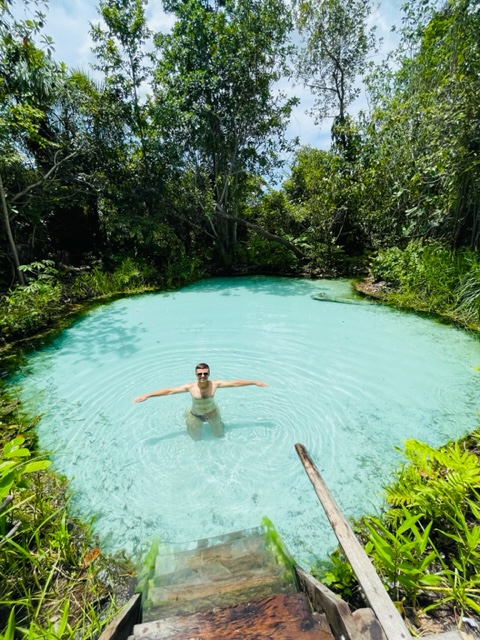
Some Stats
- Brazil has 203,000,000 people–making it the 7th most-populous country in the world. But it’s also huge in area (#5 in the world) and population density is actually quite small–it ranks #204 in density!
- The country is unfortunately one of the very most unequal in the world–it ranks #160 out of 168 countries for income equality
- Classism is HUGE and jarring here. There are separate elevators for just about every middle-class building’s inhabitants and their maids or service workers (they are usually built with tiny “maid’s rooms” as well). Anyone with a college degree is addressed with a very formal term “doutor” which literally translates to doctor and until recently college grads were kept in separate sections of prisons from the rest of the “riff-raff.”
- Almost half of the victims of the transatlantic slave trade were sent to Brazil and their descendants remain a sizable part of the Brazilian population–10% of the population identifies as Black and 45% as Mixed. A total of 57% of Brazilians are “minorities.”
- There are few dark-skinned people in leading roles of TV shows, working as news anchors, in CEO roles, etc. and even wealthy dark-skinned people report commonly being discriminated against or assumed to be servants.
- Brazilian’s native-born population is so huge and immigration relatively low that immigrants statistically make up 0% of the population (the equivalent stat for the US is 14%)
- 1% of Brazilians live abroad–unsurprisingly the US & Portugal are the first and third most common countries they move to but I was intrigued to learn that Japan is the 2nd most common destination country for Brazilians!
- Brazil has more endemic species (found nowhere else on Earth) than any other country–almost 5,000 of them!
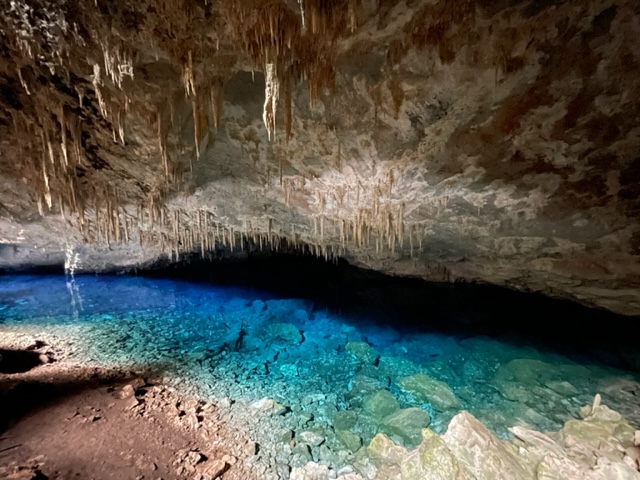
A Crash Course in Brazilian History
I read two excellent books that covered Brazilian history and contemporary issues. Here are some of the most memorable things I learned:
- The Portuguese monarchy fled war in Europe and relocated to Brazil in the 19th century, making Brazil the capital of the Portuguese empire for decades!!
- This is the only time in history that a colony became the capital of an empire :O
- Slavery began 100 years earlier and ended 25 years later in Brazil than in the US. But thousands and thousands of Brazilian slaves escaped and formed communities called quilombos in remote areas that persisted past abolition.
- Brazil suffered under a repressive military dictatorship from 1964 to 1985. Its first female president Dilma Rousseff (2011-2016) was a guerrilla who fought against it and was arrested for her actions.
- Sao Paulo has the largest Japanese, Syrian-Lebanese, and Italian populations outside of their home countries

The River/Lake
During my 2-day Amazon tour, I stayed at a place called Lake Juma, which I learned is a lake part of the year during the dry season but is considered a river during the wet season (because the lake is connected to rivers and the flow of water increases dramatically)!! Many places we visited on foot are inundated with water during the wet season–you can see the marks on the trees which spend part of the year submerged under water.

The Alley Guard
Brazil is infamous for being a high-crime country and while most of the places I visited felt super safe, I encountered some parts of the culture that speak to the country’s (perceived or actual) lack of safety. My Couchsurfing host in Manaus (the largest city in the Amazon) lived in an alley in a relatively nice neighborhood and hilariously this alley is protected the entire evening by a quite elderly man who constantly walks up and down the alley blowing his whistle. Residents must have thick enough windows that this doesn’t drive them crazy!

The Pop Star
One of the most famous pop stars in Brazil is Pabllo Vittar, who is a drag queen!! (She is literally one of the top 5 most popular singers here!) While we have some famous drag queens in the US, no one has reached her level of mainstream fame. It’s a great example of how (despite homophobia & transphobia of course persisting here) queer culture melds quite nicely with Brazilian culture, which is loud, in-your-face, colorful, and fun (think Carnaval festivals). I remember specifically talking about this with queer activists in Estonia, perhaps the quietest, most modest country in the world–who contrasted how Pride parades in Estonia need to be much more low-key in order to gain social approval.
Another drag queen singer with mainstream appeal is Gloria Groove, who I enjoy even more!
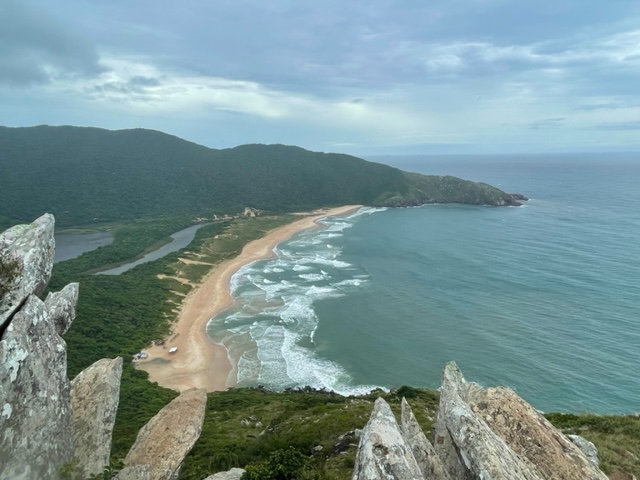
Other Travelers (Or The Lack Thereof)
In every destination I visited in Brazil (and there were a lot!), almost all of the other travelers were Brazilians from different parts of the country. Other foreign travelers were few and far between, perhaps because Brazil is so gigantic and requires frequent flying around (tough for a backpacker budget). There were a few consequences of this for me:
- Brazil is the first country I’ve been to where a few people have been literally angry at me for not speaking the local language. Like basically an attitude of “Why are you in Brazil if you don’t speak Portuguese?” or “You’re in Brazil, you need to speak Portuguese.”
- Now, if I was living here, I would of course learn Portuguese but as a traveler here for the short-term, learning an entire new language is not realistic, which people in every other country I’ve been to up until this point seem to understand.
- I think perhaps this attitude stems from Brazilians being self-conscious about not speaking English or perhaps a strong and understandable anti-colonial/imperial attitude (ironic!) or quite simply the fact that meeting a non-Portuguese speaker is a novel experience for many Brazilians.
- I always tell friends to never be afraid of visiting a country where English speaking is limited because you can always find some English speakers and Google Translate works really well for communication and I stand by this even for Brazil but it was the most challenging country language-wise yet!
- Which is astounding since I speak Spanish and was able to speak in Spanish and be understood by Brazilians all the time (but not vice versa), an advantage I don’t have in most countries I visit
- While I did meet a few fellow foreigners and a few English-speaking Brazilians here and there, my default assumption for any tour or day out was that I wouldn’t meet any English speakers (including tour guides!)
- It is often difficult to buy bus or plane tickets here as a foreigner because a Brazilian id number is often required to purchase them online! So you must go in-person to bus stations, use a friend’s id number, or navigate to the English version of airline websites, where the flights are often priced significantly higher!
- The other annoying things about taking a bus in Brazil is that they are extremely expensive ($30 for a 3-hour ride or $50 for a longer journey would be normal–basically US prices) and the buses really often break down because the corporations who run bus lines here (probably with monopolies to keep the prices high) don’t maintain the buses well. Despite the fact that I only took a few long bus journeys here, 2 buses I was on broke down during the journey, forcing us to wait for another bus to pick us up–and I often saw broke-down buses on the sides of highways.
- On the other hand, cultural immersion is easy here! You’re forced to learn key phrases in Portuguese, you meet tons of locals (and only locals) every day, and you really feel like you’re in a foreign country. And the majority of Brazilians I met were very friendly, some extremely so. So while the culture shock was strong at times, the cultural experience was also strong 🙂
- Finally, the most challenging part of Brazil for me was the cost! Since Brazil is huge, it’s necessary to fly between most destinations of interest (unless you’re cool with or forced to take 20+ hour bus rides, which I chose to avoid). And the flights are not super cheap here–in India I was able to fly between cities for under $50 but here I usually spent $100-$200 per flight, sometimes over $300–which was painful and so much more than I’m used to spending. Plus, tours in nature areas here are necessary (you can’t get to many places on your own) and extremely expensive–$400 for a 3-day tour or $50-$100 for a 1-day tour is typical–basically US prices. Including flight and tour spending, my spending for Brazil was more than double most of the countries I’ve been to on my trip and $1,000/month more than the second-most-expensive country I’ve been to on my trip so far (Israel).
- Countries known to be expensive like Norway, Denmark, Sweden, and the UK were possible for me to travel through more cheaply by cooking, doing lots of Couchsurfing and staying at the cheapest possible hostels, completely avoiding tours, etc. but I would have had to miss out on amazing experiences and places in Brazil to significantly lower my budget.

Carnaval
It’s even possible to feel like you’re the only tourist around during Carnaval events, which is astounding since it’s such a globally-known event and attracts over a million foreign tourists per year…I guess this is because Rio has 12 million people and there are probably well over a million Brazilians from other cities in Rio for Carnaval.
I definitely recommend putting Rio Carnaval on your bucket list as it is an experience of a lifetime! How does it work?
- Carnaval lasts almost a week and takes place in February every year. While it’s celebrated in cities across Brazil, Rio hosts the Sambodrome parade and the biggest parties so it’s the most popular place to celebrate. (Carnaval is also celebrated in many other countries around the world, especially in the Caribbean but the traditions are a bit different in each place.)
- The aforementioned Sambodrome parade takes place over multiple nights and is essentially a giant parade with giant floats filled with dozens of samba dancers in gorgeous feathered shiny costumes. To watch, you buy a ticket (~$100 USD for relatively good seats) to sit in stadium-style seating above the parade route. It was the best parade of my life and was the best $100 I ever spent!
- In addition to the Sambodrome, there are blocos (block parties) taking place all over Rio over the week. (We did a free walking tour and our tour guide texted us a list of 50+ blocos along with her recommendations of which to attend.)
- Many Brazilians I’d met told me to skip the Sambodrome and only attend the blocos, but my friends and I were so happy that we disregarded this advice as the Sambodrome was the highlight of Carnaval for us, while the blocos were essentially just street parties, sometimes with dancers on stilts but without so much entertainment or culture.
- While non-performers don’t wear the elaborate feathered costumes Carnaval is famous for (these are custom-made and expensive), other Brazilians and tourists port shiny, colorful, and often provocative apparel, which can be bought in party and clothing stores in markets around the city. This was a highlight of the event for me!
- Since it’s the biggest holiday in Brazil, accommodations are priced 4x as high as normal and it’s important to book far in advance (my friends and I booked our Airbnb 9 months in advance).
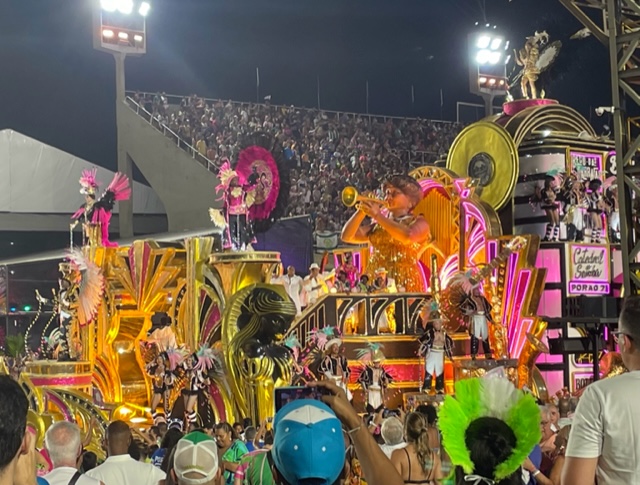
The Singing Driver
I experienced a very Brazilian moment taking a public bus in Recife as the driver blasted music and sang along to it during my entire ride! Super cute and fun.

Where’s The Tea?
Brazil is the first country I’ve been to where black and green tea are rare and difficult to find! It’s the most coffee-dominant culture I’ve experienced so usually coffee is the only option and when tea is available, it’s only Brazilian varieties of herb and fruit teas, some of which were delightful.

Well, Oops
I was about 3/4 of the way through a bus ride from Brasilia to Chapada dos Veadeiros when we stopped for lunch at a buffet restaurant. I asked the driver how long the stop was for and he told me 30 minutes so after I finished eating I pulled out my laptop and started some travel planning. After about 20-25 minutes, I suddenly noticed that the driver had left the restaurant and looked outside, only to see the bus pulling away! I guess I could have dramatically ran after the bus waving my hands, but I felt very chill and calm in the moment and decided to hitchhike the last hour to my destination.
The only issue was that my bag was in the bus and the bus was continuing on to a city much further than my destination so I needed to get to my destination before my bus to get my bag or else that would turn into a very complicated situation. Luckily, a Brazilian psychologist who spoke little English picked me up after a few minutes, we passed the bus on the highway, and I chilled at the bus station until the bus arrived and I got my bag. I was so happy that I remained calm and didn’t freak out since it all worked out in the end and turned out to be a fun adventure 🙂

What To Watch
During the pandemic, I started trying to watch shows from as many countries as possible since I couldn’t actually travel anywhere and one of the shows I discovered was Netflix’s Bom Dia Veronica, a Brazilian series about a police officer who helps domestic violence victims. It’s excellent and I highly recommend!
While here, I watched 9 Brazilian films and my favorites were The Way He Looks (a charming story about a blind gay youth), The Second Mother (the story of what happens when a maid’s fiercely independent daughter comes to live with her and the family that employs her), and Alice Junior (a comic-based film about a trans girl moving to small town–it’s very upbeat and happy, which I think is so important for a community that faces so much discrimination and tragedy).
A funny thing about Brazilian films is that they usually have very long, random, highly specific titles–quite different from the very short, direct titles that are ubiquitous in Hollywood. For example, The Second Mother is actually called “When will she return?” and The Way He Looks is called “I want to go home alone.”

The Airplane City
Brazil’s capital of Brasilia was built from scratch in the 1950s and designed in the shape of an airplane! Locals talk about locations in terms of “north wing,” “south wing,” or “cockpit” and everyone who lives in the city center lives in a numbered quadrant that makes it easy for someone to instantly understand where a location is. I love this geographic organization!
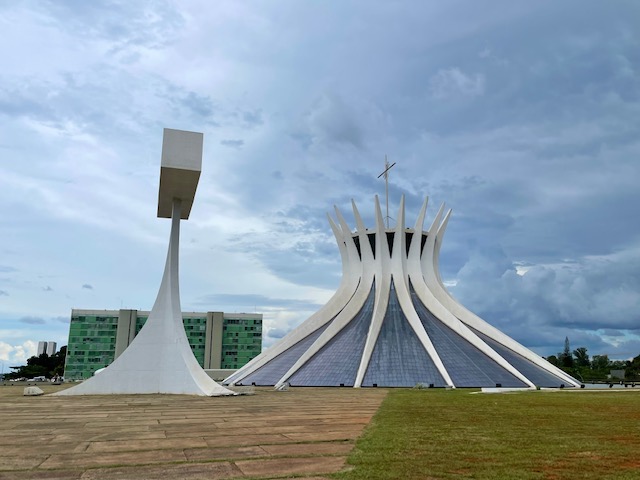
Stop If You Want
In Rio, it’s apparently completely legal to ignore red lights at night and just hop on through once you stop to make sure no one is coming. A tour guide said that this is because people were doing this so often that police gave up enforcing the law and the law eventually changed. I witnessed this even in the middle of the day in the city of Florianopolis so apparently it’s not even just a Rio thing!

The Half Day
I think it’s universally agreed here that Brazil has a terrible public education system. And the default here is for students to attend school for only half the day, something which they apparently take for granted and do not appreciate in comparison to the students stuck in school all day in most of the world ;).
More wealthy students often attend private schools, which sometimes are full-day or often have a half-day of classes plus a half-day of tutoring.
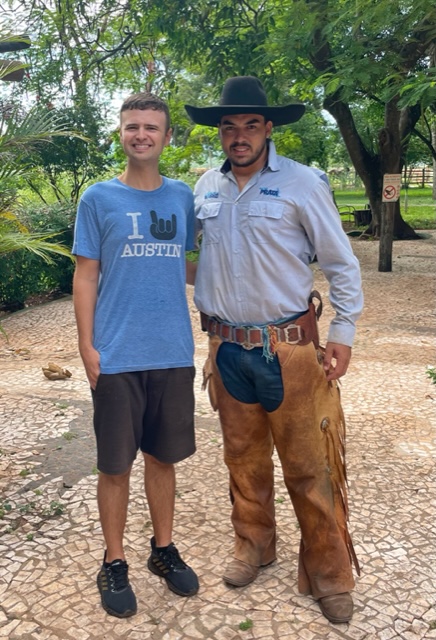
A Government Forced into Helping Trans People
I met with Gisella Lima and her team at the LGBTQ advocacy office in the Belo Horizonte City Hall to better understand the cognitive dissonance of a country with both loud and proud gender-bending Carnaval and Pride events alongside strong religious conservativism and queerphobia.
It became clear that (just as in the US) acceptance of the LGB population has become somewhat taken for granted in major cities and their rights are relatively secure while the T folks of the LGBT community are suffering by far the most discrimination in Brazil today.
- Unlike most US cities, the largest Brazilian cities all have offices within the city government (not separate nonprofits) that specifically work on supporting their city’s queer community.
- According to the team, this did not come about because of progressive thought but because so many trans Brazilians were being murdered that the government was basically forced into action to address the crisis. Such support at the city level has existed since 2008.
- The LGBTQ department of the city hall provides anti-poverty assistance for queer people (connecting them to restaurants that serve free food to people in need through a governement partnership, temporary housing shelter, and social assistance), and there is a team of social workers who help victims of violence from family, partners, or acquaintances.
- Devastatingly, Brazil has the most anti-queer hate crimes in the world and trans Brazilians have a life expectancy of 35 years old (this stat has oddly often been extrapolated to the US trans population, despite the data coming from Latin America and there being no evidence of this in the US–where there are indeed often tragic murders of trans women of color but no studies of their life expectancy.)
- Just as in the US, darker-skinned Brazilians bear the brunt of anti-trans violence–Black people are 56% of the Brazilian population but 70-80% of the victims
- On a positive note, Brazil has a strong law that requires institutions like hospitals and schools to use trans people’s “social names” instead of their legal names, and legal names and genders can also be updated on official documents.
- For example, a teacher of a trans high school student is required by law to call the student by their chosen name even if they are too young to legally change their name yet
- And trans folks have the right to do hormone treatment or transition surgery, but they have to pay for it themselves and it’s prohibitively expensive. (This is one of many reasons why so many trans woman go into sex work–they are often desperate for money to undergo this surgery to feel comfortable in their own body. But ironically trans women make less money after they have surgery, since many straight men prefer them to have penises. Look up stats on consumption of trans porn if this surprises you!)
- The week I was in Belo Horizonte, a video went viral of a man ripping a window-length rainbow sticker off the front door of the very office I had the meeting in, effectively rendering the office invisible to passersby. Apparently substantive rumors abound that the conservative mayor or other powerful politicians paid him to do so.
- According to the team, this did not come about because of progressive thought but because so many trans Brazilians were being murdered that the government was basically forced into action to address the crisis. Such support at the city level has existed since 2008.

